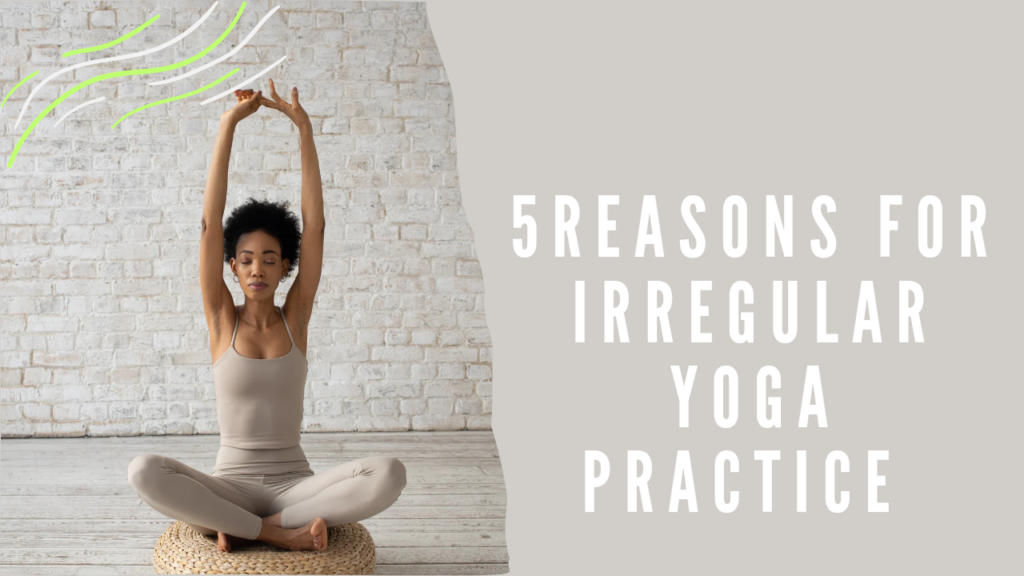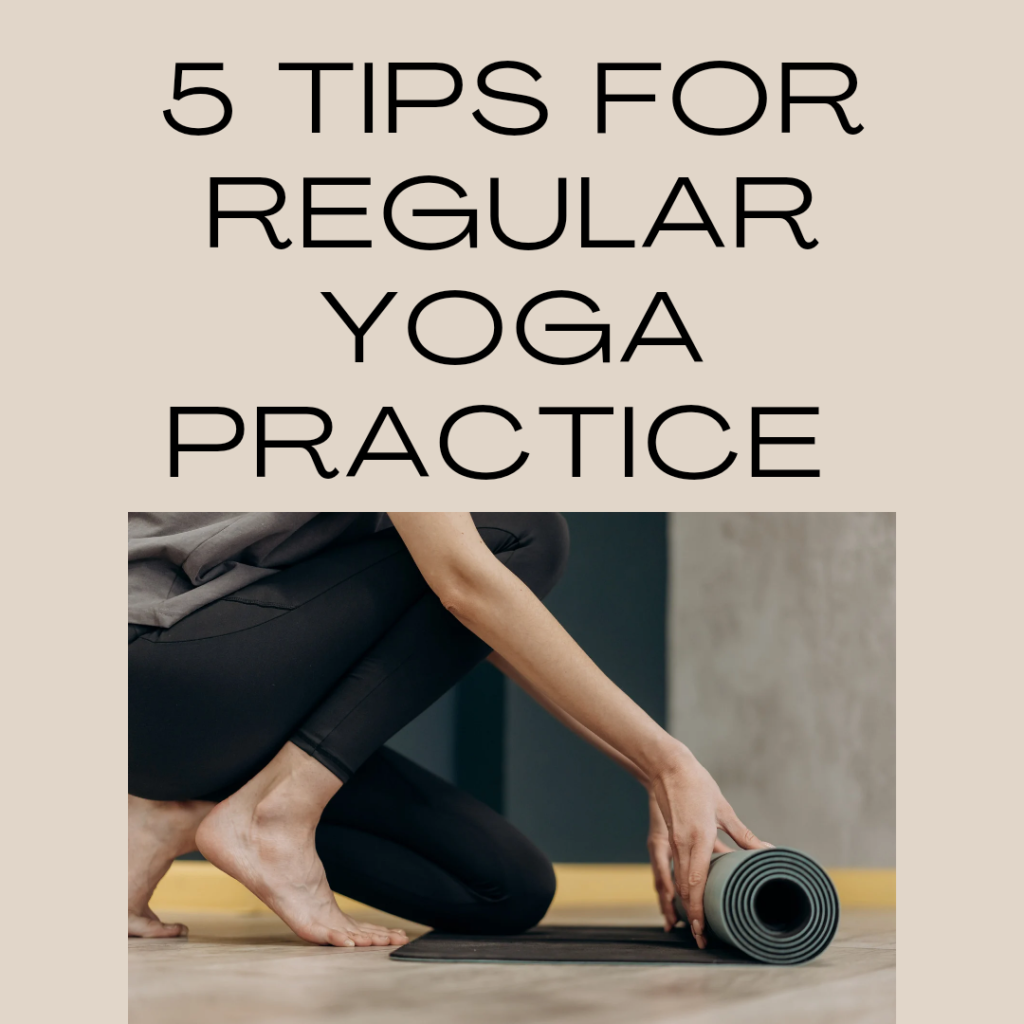Here are five simple reasons why people might not practice yoga regularly:

- Busy Schedules: Many people have full lives with work and family, making it hard to find time for yoga.
- Lack of Motivation: Without quick results or support from others, it can be tough to stay motivated.
- Injuries or Pain: Some might have injuries or physical issues that make yoga uncomfortable, which can stop them from practicing.
- Access to Classes: Not everyone has easy access to yoga studios or online classes, making it harder to practice regularly.
- Misunderstandings About Yoga: Some people think yoga is only a workout or tied to specific beliefs, which can keep them from trying it.
Here are five solutions to help people practice yoga more consistently:

- Create a Schedule: Set aside specific times for yoga each week, just like any other important appointment. This helps make it a regular part of the routine.
- Find a Supportive Community: Join a local class or an online group where people can share experiences, motivate each other, and feel connected.
- Start Slowly: Begin with short, gentle sessions to build comfort and confidence, especially for those with physical limitations or injuries.
- Use Online Resources: Take advantage of free or affordable online classes, apps, or videos that can be accessed anytime, making it easier to practice at home.
- Educate About Yoga: Learn more about the benefits of yoga beyond physical fitness, such as stress relief and mental well-being, to increase interest and motivation.
Yoga is a holistic practice that promotes physical, mental, and spiritual well-being. For beginners, starting with simple asanas (poses) can help build strength, flexibility, and mindfulness. Here are some fundamental yoga asanas suitable for beginners, along with their benefits and basic instructions.
1. Mountain Pose (Tadasana)
Benefits: Improves posture, strengthens thighs, and enhances overall balance.
How to Do It:
- Stand tall with your feet together, weight evenly distributed.
- Engage your thighs and lift your chest, rolling your shoulders back.
- Arms should hang by your sides or reach overhead with palms facing each other.
- Hold for 30 seconds to 1 minute, focusing on your breath.
2. Downward Facing Dog (Adho Mukha Svanasana)
Benefits: Stretches the spine, hamstrings, and calves; strengthens arms and legs.
How to Do It:
- Start on your hands and knees in a tabletop position.
- Tuck your toes and lift your hips toward the ceiling, forming an inverted V shape.
- Keep your hands shoulder-width apart and feet hip-width apart.
- Hold for 30 seconds to 1 minute, pressing your heels toward the floor.
3. Child’s Pose (Balasana)
Benefits: Relaxes the body, stretches the back, and calms the mind.
How to Do It:
- Kneel on the floor, sitting back on your heels.
- Extend your arms forward on the floor, or let them rest alongside your body.
- Lower your forehead to the ground and relax.
- Hold for 1 to 3 minutes, focusing on deep breathing.
4. Warrior I (Virabhadrasana I)
Benefits: Strengthens legs, opens hips and chest, improves focus.
How to Do It:
- Stand with feet hip-width apart and step one foot back, keeping the front knee bent.
- Align your front knee over your ankle and raise your arms overhead.
- Gaze forward, engaging your core.
- Hold for 30 seconds to 1 minute, then switch sides.
5. Cat-Cow Stretch (Marjaryasana-Bitilasana)
Benefits: Improves spinal flexibility and relieves back tension.
How to Do It:
- Start in a tabletop position on hands and knees.
- Inhale, arching your back (Cow), lifting your head and tailbone.
- Exhale, rounding your spine (Cat), tucking your chin and tailbone.
- Repeat for 1 to 2 minutes, moving with your breath.
6. Cobra Pose (Bhujangasana)
Benefits: Strengthens the spine, opens the chest, and relieves stress.
How to Do It:
- Lie face down with your hands under your shoulders.
- Inhale and lift your chest off the ground, keeping your elbows close to your body.
- Relax your shoulders away from your ears and keep your pelvis on the floor.
- Hold for 15 to 30 seconds, then lower back down.
7. Seated Forward Bend (Paschimottanasana)
Benefits: Stretches the spine and hamstrings, calms the mind.
How to Do It:
- Sit with your legs extended straight in front of you.
- Inhale, lengthening your spine; exhale and hinge at your hips, reaching for your feet.
- Keep your back as straight as possible, bending your knees if needed.
- Hold for 30 seconds to 1 minute, breathing deeply.
Conclusion
As a beginner, it’s important to listen to your body and practice at your own pace. Start with a few of these asanas, gradually adding more as you gain confidence and strength. Incorporating yoga into your routine can lead to a more balanced and mindful life. Remember to focus on your breath and enjoy the journey!
4o mini